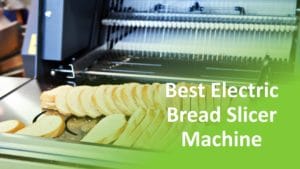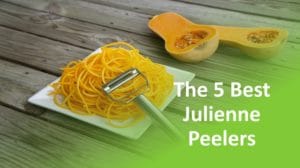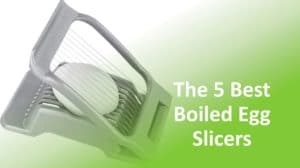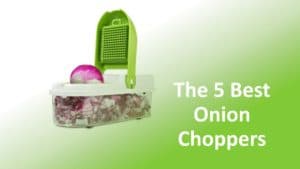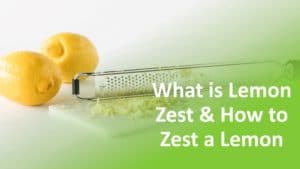Cheese is probably the single food I couldn’t live without. Whether it’s a creamy Havarti or a robust Pecorino, I add cheese to almost every dish I make at home.
When I was first getting into cheeses during my college days, I just used a knife and a cutting board. Looking back, I now understand why most of my cheese dishes didn’t melt evenly. Whenever I was cutting with a knife, I would have wildly different thicknesses of cheese.
That’s when I did some research and picked up my first cheese slicer. Read on to learn the tips and tricks I picked up over the years and which is the best cheese slicer of 2021.
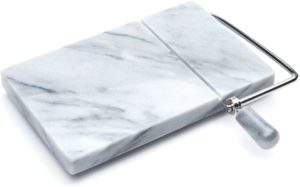
- Material: Stainless Steel
- Dimension: 5 x 8.25 x 1.25 inches
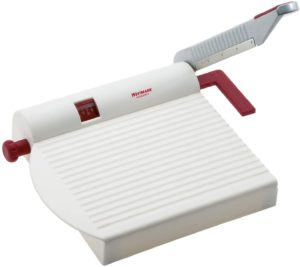
- Material: Polypropylen, Aluminum, Stainless Steel
- Dimension:9.25 x 9 x 2.13 inches
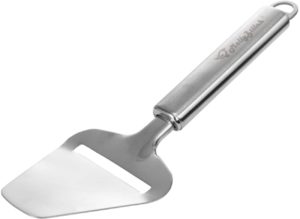
- Material: Stainless Steel
- Dimension: 9.06 x 3.15 x 0.79 inches
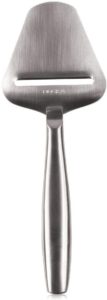
- Material: Stainless
- Dimension: 8661.4 x 2913.38 x 787.4 inches
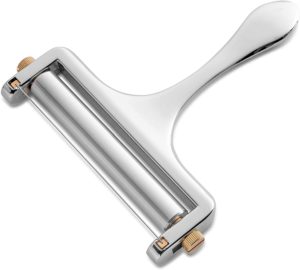
- Material: Stainless Steel
- Dimension: 8.25 x 6 x 0.5 inches
How We Picked Cheese Slicers
The first step in choosing the best cheese slicer is research. I spent a total of ten hours doing online research before I purchased any cheese slicers. Online research entails reading manufacturer specifications, and of course, customer reviews.
After completing my online research, I narrowed down the best cheese cutters to eleven models. Luckily, some of my friends owned a few of the cheese slicers I chose, so I borrowed those, but I still needed to purchase seven of the models.
After FedEx delivered my cheese slicers, I immediately got to work testing them out on a variety of cheeses. I chose a soft, a medium, and a block of hard cheese to see how the cheese slicers functioned under various conditions. The cheeses I chose were Camembert, Gruyère, and Cheddar.
After testing all of the slicers, I chose the five best cheese slicers. To me, these five had the most uniform cuts, as well as being user-friendly and durable.
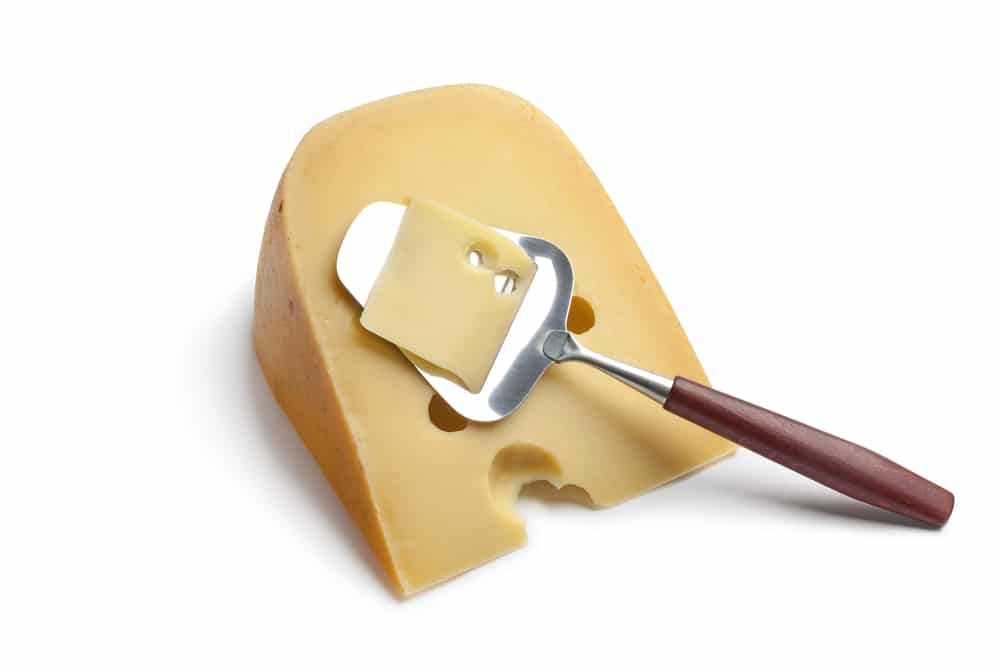
Plane, Board, and Rolling Cheese Slicers: What’s the Difference?
Before we get into the cheese slicer reviews, I should break down one of the most common questions I get asked about cheese slicers—what’s the difference between the types of cheese slicers?
There are three main types of cheese slicers. The first is a cheese plane. Cheese planes are usually in a triangle shape with a blade near the center of the triangle. To use a cheese plane, you drag the blade on top of the cheese, producing a slice.
Planers are the easiest to clean because most are dishwasher safe. Cheese planes only have a limited number of cheeses they can slice through. They are not suitable for soft cheeses because the planer puts too much pressure on the cheese, causing bulging.
The next type of cheese slicer is a board slicer. Board slicers got their name because the blade is attached to a base. The base material can be almost anything, from plastic to metal to stone. The cutting instrument can be either wire or a blade.
Board slicers are some of the most versatile cheese slicers. If the slicer has a wire, it’s suitable for both soft and hard kinds of cheeses, although ultra-hard cheese like Parmesan may damage the wire. Board slicers with a blade can slice any cheese, although they work best with hard cheeses.
The final type is a rolling cheese slicer. Rolling cheese slicers utilize a wire and a small rolling pin, usually made from a metal material. The rolling pin allows the slicer to glide over cheese with ease while the wire does the slicing.
Rolling cheese slicers are usually adjustable, which means you get to select how thick you want your cheese slices. Since they use a wire, it’s best to avoid using a rolling cheese slicer on ultra-hard cheeses.
Best Cheese Slicer Reviews of 2021
Here are the five best cheese slicers currently available in 2021 and my cheese slicer reviews.
1. Fox Run Marble Cheese Slicer

The Fox Run Marble cheese slicer isn’t only beautiful to look at. The marble base provides a stable, sanitary, non-stick surface for your cheese to rest on during slicing. The only issue with marble is its porous nature. You have to hand-wash with soap and water before thoroughly drying the marble to avoid any water damage.
The slicer utilizes a wire as the main cutting apparatus. A wire is among the best materials to cut sliced cheese because it has the strength to cut semi-hard cheeses but the delicacy to slice soft cheeses without causing the cheese to bulge or break.
The wire is made from stainless steel, and unlike other slicers that use a blade, you won’t need to sharpen the wire to maintain a smooth cut. If you feel like the wire is losing its strength, which shouldn’t happen for years, you can replace it with one of the two replacement wires Fox Run provides with every cheese slicer.
Finally, the wire also allows you to choose the thickness of each slice. It’s not as simple as other adjustable cheese slicers because you need to measure the thickness by eye, but it still gives you more flexibility than other non-adjustable cheese slicers.
- Long-lasting cutting wire
- Beautiful non-stick marble base
- Flexibility on thickness
- Won’t cause soft cheeses to bulge
- Comes with two replacement wires
- Marble needs to be hand washed and dried
- The threaded handle becomes loose over time
- Wire cannot cut the hardest cheeses, like Parmesan
2. Westmark Multipurpose Cheese Slicer

The Westmark Multipurpose cheese slicer is a German-made product that utilizes an ABS plastic base and a stainless steel blade to get you the exact cuts you’re looking for. When I tested out the cheese slicer, I was amazed at how easy to use it was.
The plastic base has a dial on the left-hand side that you can use to adjust the thickness of each slice. When I first saw the dial, I was slightly perplexed. All the other adjustable cheese slicers I used were manual, meaning I needed to either measure the thickness myself or change the position of a wire or blade.
With the Westmark cheese slicer, all you need to do is use the dial until it reads your desired thickness. Then slide whatever cheese you’re cutting until it rests against the red guard on the right side of the cutting board. From there, cutting to whatever thickness you want is a breeze.
One of the best attributes of the Westmark Multipurpose cheese slicer is its ability to cut more than just cheese. The stainless steel blade is mounted on a cast aluminum handle. The strength of the handle and blade means that you can cut cheese, meat, veggies, and even dense loaves of bread like rye.
When I tested out the Westmark Multipurpose cheese slicer, I used it to make a charcuterie board. I was able to cut sausages, cheese, and veggies like bell peppers with ease.
My only issue with the Westmark is its plastic base. Although it’s easy to clean, I did shave off a bit with the blade. You have to make sure to cut straight down to avoid cutting the plastic base. If the base was a more solid material, the Westmark would be in the running for the best cheese slicer.
- Can slice more than just cheese
- Strong stainless steel blade and aluminum handle
- Adjustable thickness
- Best for harder cheeses like Cheddar or Gruyère
- Best to avoid soft cheeses like Brie or Camembert
- Must use downward pressure to avoid damaging the base
3. Molly Zillah Stainless Steel Cheese Planer

If you’re in the market for a budget cheese slicer, then the MollyZillah Stainless Steel Cheese Planer is the choice for you! When I think of budget tools, I always look for two essential features—price and durability. What’s the point of getting a budget tool if it breaks within the first few uses, right?
With that in mind, it’s easy to tell why I chose the MollyZillah cheese planer. It’s half the price of any other cheese slicer I reviewed, but it’s made with premium materials. Both the handle and blade are made from durable, anti-rusting stainless steel.
A cheese planer like the MollyZillah isn’t adjustable, so it can only produce one thickness. What a planer lacks in adjustability, it makes up for with its ease of use. A planer simply needs you to drag it along the cheese with uniform pressure to produce perfect slices every time.
You can’t effectively use a cheese planer on soft cheeses like Camembert. Soft cheeses bulge and get caught in the blade. That means your slices will look more like balls than anything else. With that in mind, I don’t recommend using a cheese planer with soft cheeses.
One of the best features of cheese planers is how easy they are to clean. Since the MollyZillah is made from stainless steel, you can throw it in the dishwasher to get it clean. You won’t have to worry about damaging the cheese planer by cleaning it since it’s dishwasher safe.
- Best price for the quality
- Easy to clean
- Stainless steel construction for strength and durability
- Best for semi-hard or hard cheeses
- Can’t slice soft cheeses
- Can only slice one thickness
4. Boska Cheese Slicer

The Boska cheese slicer is a premium cheese planer. Based in Holland, Boska is renowned for producing some of the best cheese-related tools in the entire world. Their cheese planer, which they produce with only the best stainless steel components, not only cuts well but looks great while doing so.
Boska uses a single piece of stainless steel to form their cheese planer. By using a single piece, Boska ensures that their cheese slicer is stable enough that you can slice even the hardest cheeses without worrying that the blade will break.
The handle and blade have a frosted finish which makes the product look distinguished compared to other unfinished cheese slicers. The handle is also hollow, meaning it feels extremely lightweight when you’re holding it.
Cheese planers are among the easiest to use cheese slicers. Compared to wires or blade cheese slicers, a cheese plane is the most simple to use. Just glide the plane over the cheese, and you’ll have beautifully uniform slices of cheese in no time!
A feature unique to Boska is their ten-year warranty on all products. If you aren’t satisfied with the blade or any other part of the cheese slicer, you can return it for a full refund.
As with any cheese planer, the Boska does have a few downsides. First of all, you can’t cut soft cheeses. You also can’t adjust it at all, so you’re stuck with the single thickness of cheese.
- Beautiful frosted finish
- Single piece stainless steel construction for strength
- Ten-year warranty
- Lightweight construction
- Can’t slice soft cheeses
- Not adjustable
5. Bellemain Adjustable Cheese Slicer

The Bellemain Adjustable Thickness cheese slicer utilizes a wire and a roller, so you get ideal cheese slices every time. The wire and roller can handle blocks of cheese up to 3.5 inches wide. You can adjust the wire to produce paper-thin slices or ones as thick as a quarter inch.
Bellemain constructs their cheese slicer’s handle from a single piece of zinc. By using a single piece of zinc, Bellemain can ensure their cheese slicer is durable and strong, while the alloy coating protects it from rust.
The cutting wire is made from stainless steel to protect it from rust. Bellemain also includes a replacement wire, but stainless steel wires don’t need replacement until you use the cheese slicer for years.
Bellemain includes a one-year warranty on their adjustable cheese slicer. With the premium materials they use in construction, it’s unlikely you’ll ever need to use the warranty, though.
The Bellemain cheese slicer was made for any type of cheese. You can slice harder cheeses like Cheddar or Swiss and soft cheeses like Brie with ease. The strong wire allows you to cut a variety of cheeses without causing bulging or breaking, which can happen with other slicers not meant for specific types of cheese.
I also recommend only washing the slicer by hand. The product does not state whether it is dishwasher safe, but from my research, it’s always better to wash wire slicers by hand. The conditions within a dishwasher don’t suit the wire or the chrome finish well.
- Strong handle construction
- One year warranty
- Adjustable slice thickness
- Must use Bellemain replacement wires (others won’t fit)
- The wire may loosen over time and needs to be tightened
- Hand wash only
Best Materials for Cheese Slicers
When it comes to cheese slicers, you’ll get a good slicer if you know the best materials manufacturers use in cheese slicers. The most common materials we find in cheese slicers are metals, usually stainless steel.
Stainless steel is a popular choice for cheese slicers because it’s not only strong but it has anti-rusting properties. A rusty wire or handle means potentially inedible cheese, which is why stainless steel has become such a popular material for cheese slicers.
Other common materials include plastic and other metals, like zinc or copper. Both zinc and copper resist rusting as well. Plastic can be a good choice for cheese slicers, although you need to make sure the quality is up to your standards. A flimsy plastic handle won’t help anyone achieve perfectly sliced cheese.
With board cheese slicers, the board material is essential for getting the best slices. Marble stays cooler than other materials. That means when you put your cheese on the board, it stays cool and easy to cut. Other materials for board cheese slicers include plastic and wood.
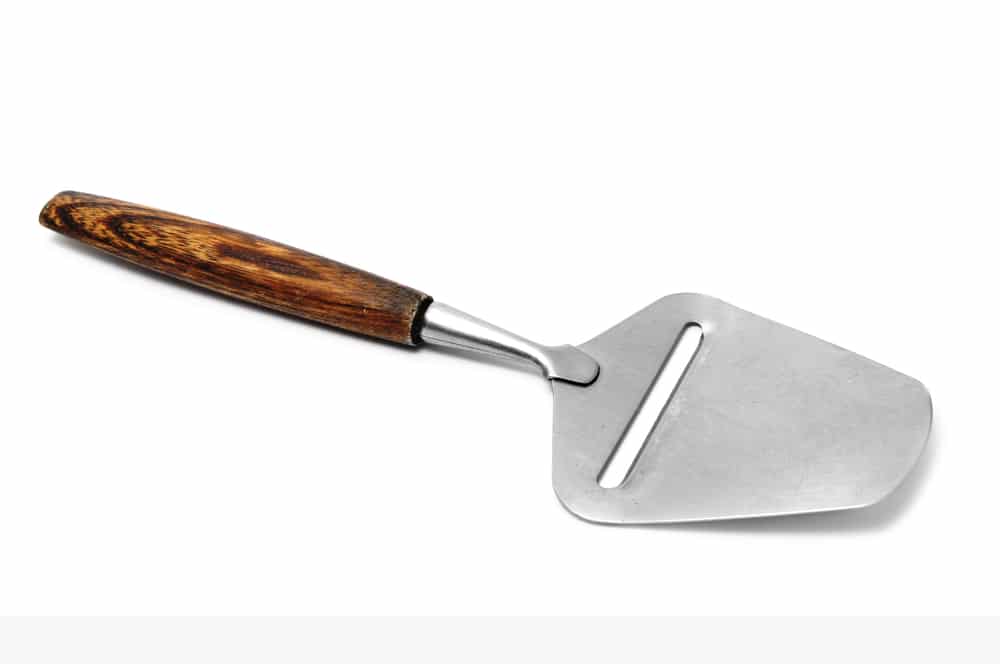
Best Conditions for Cheese Slicing
To get the best slices out of your cheese, you need to make sure the conditions are ideal. For slicing, this usually entails making sure your cheese isn’t too cold or too warm.
If you try to cut cold cheese, you may damage your cutting apparatus. When you use a wire cutter, this is especially true. The wire may snap or bend instead of cutting into the cheese if you use cheese straight out of the refrigerator.
If your cheese is too warm, you risk bulging or uneven slices. When your cheese bulges, it means you won’t get uniform slices. Instead, you’ll be left with uneven, broken pieces of cheese.
So what is the ideal temperature to slice cheese? Once the cheese is at room temperature, it’s considered ready to slice. A more exact temperature range for slicing cheese is between 65 and 70 degrees.
Frequently Asked Questions
Here are some of the most common questions I receive when I’m discussing my choice for the best cheese cutter.
I get this question a lot from home cooks, and in short, yes, they do, but it depends on the type of restaurant you visit. If you’re heading to your local burger place, it’s unlikely they use a cheese slicer.
But when you visit a restaurant that adds a flare of cheese to a dish, like a salad or pasta, it’s likely that they used a cheese slicer. For these types of restaurants, it’s essential to have uniform slices of cheese, both for taste and presentation.
Cheese slicers last for years if you maintain them. For slicers with wires, that means hand washing and drying to avoid damage or rust. Drying is often the aspect of maintenance that most people miss, but it’s essential for a long-lasting cheese slicer.
Cheese slicers with blades, either cheese planes or board slicers, may need sharpening if you use the tool daily. If you feel like your blade is dulling, take it to your local knife sharpening expert. After you sharpen the blade, the slicer will be as good as new.
Yes, some cheese slicers are better suited for soft cheese than others. As a rule of thumb, cheese planes are best for harder cheeses, while cheese slicers with wires are best for soft cheeses.
In my experience, it’s always best to hand wash cheese slicers. Most cheese planes are dishwasher safe, but some aren’t. If you’re unsure whether your cheese slicer can go in the dishwasher, read the manufacturer instructions that come with your slicer.
I wash my cheese slicer by hand because there’s less potential for damage. I use warm water and soap to clear off any remaining bits of cheese. After that’s done, I dry off the slicer with a clean dishcloth.
Wrapping Up
When it comes to choosing the best cheese slicer, you can’t go wrong with any of the choices on this list. After testing all of the products out, I came to the conclusion that the best cheese slicer is the Fox Run Marble cheese slicer. Its sleek finish and easy-to-use features make it one of the most enjoyable cheese slicers I’ve ever used.
The other cheese slicers may appeal to you if you want an adjustable model or one more suited for harder cheeses. During my research, I made sure to test out the various methods you can use to cut cheese.
The five cheese cutters I chose reflect the various needs someone may have when they’re cutting cheese. Now you’re able to find the cheese slicer best suited for your needs!
More on cheese:

